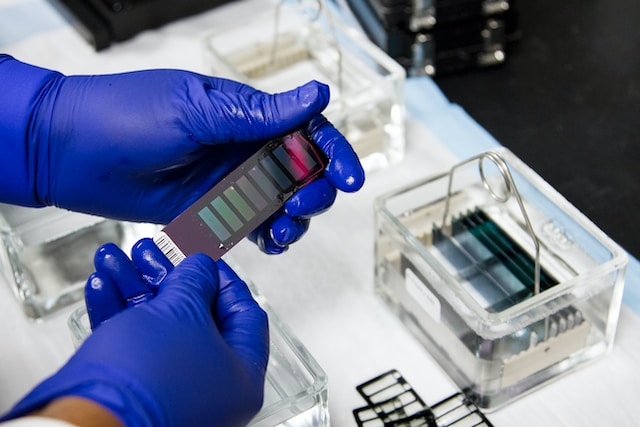A diagnosis of cancer can be overwhelming, but treatment doesn’t have to be. What if science, engineering, and machine learning were to collaborate and create more effective therapies for the benefit of cancer patients?
Cancer care is undergoing a shift, leveraging data-driven approaches to revolutionize diagnostics, treatment decision-making, and prevention. At the forefront of this strategy is Predictive Oncology, founded in 2002. The Pittsburgh-based company’s mission, according to Dr. Pamela Bush, Chief Business Officer, is to “add real human data early in drug development that will increase the probability of success.”
Getting the right medicine to the right patient at the right time
Predictive Oncology has the benefit of the world’s largest privately held biobank containing over 150,000 diverse solid tumor samples.
Their biobank is one of three components—along with the active machine learning engine and customizable tumor assays—that make up a platform known as PEDAL, or Patient-centric Discovery by Active Learning.
The platform uses AI to anticipate cellular changes that can be measured. The compound, molecular structure, and pathological molecule are fed into the machine learning engine. Over 10,000 combinations of possible predictive models are then ranked, evaluated within an assay, read, and refed into the engine for another round of predictions with increasing confidence.
Rather than look at specific biomarkers, PEDAL has the ability to look for commonalities in all compounds, run multiple tumor types simultaneously, and in parallel, compare drugs against samples for a large number of confident predictions.
Linked to a preclinical drug database, PEDAL allows Predictive Oncology to keep tabs on companies developing oncology molecules that would benefit from their platform. PEDAL offers quality and speed within the drug discovery space. The ultimate goal is to “get the right medications to the right patients at the right time,” per Dr. Bush.
How collaboration can lead to potential cures
Predictive Oncology works with drug developers during different stages to improve the likelihood that molecules will eventually become a drug.
The two stages include a compound discovery stage for oncology and one focused on formulation solutions for drug development. The oncology stage involves the biobank, with AI and machine learning algorithms predicting the cellular changes that can be measured.
Dr. Bush says their system is efficient, as they “use AI to leverage their samples to narrow down and assist in better candidate selection, to determine an improved tumor indication strategy, all the while making commercial decisions that focus on the patient.”
As technologies evolve, the future involves sophisticated multi-modal data sources integrated with collaboration between industry, academia, and regulatory bodies to drive innovation, standardization, and quality care to patients that can be impacted by leveraging the PEDAL platform during development.
The way in which Predictive Oncology utilizes the power of predictive models offers the potential to optimize the utilization of resources, improve patient outcomes, and transform the science of oncology as it is known today. Combined research and technological advancements are shifting the future of patients with cancer, and Predictive Oncology is altering the landscape in a positive direction.




